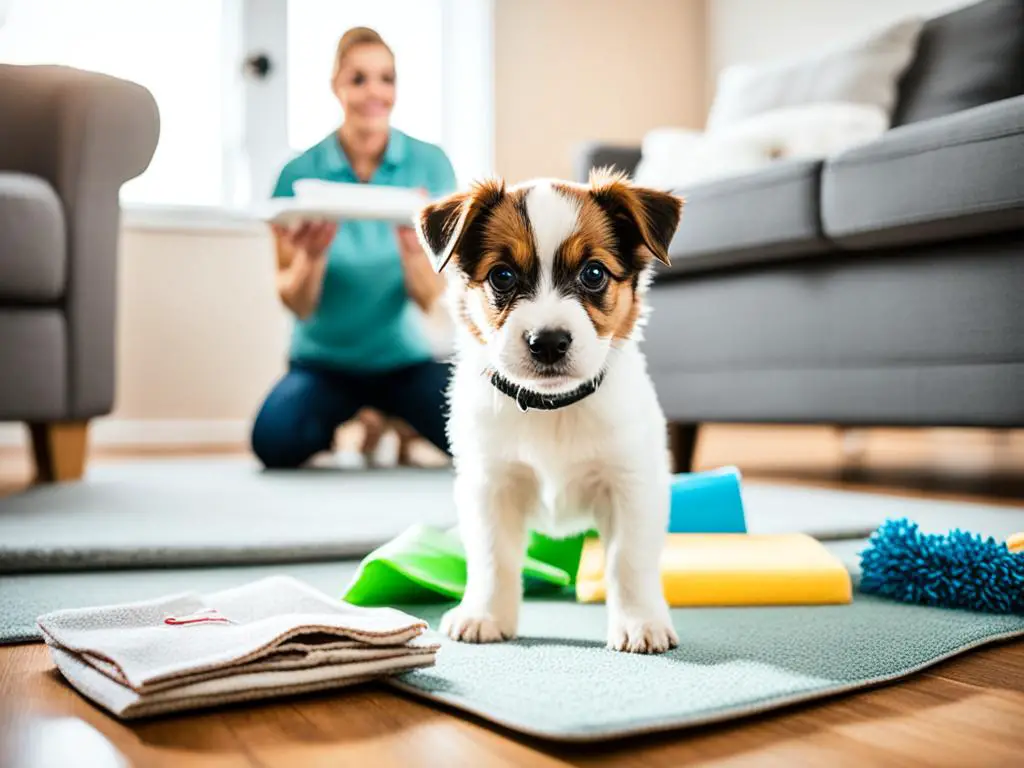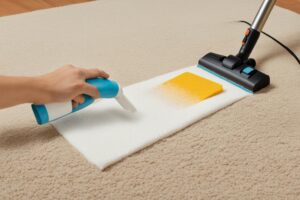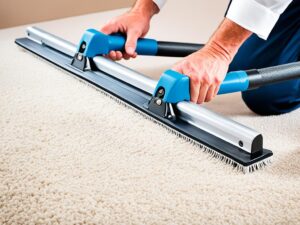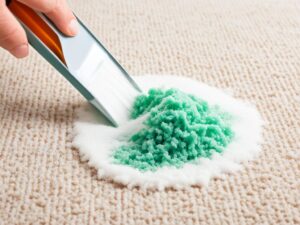Potty training a puppy in an apartment with carpet can be a challenge, but with the right strategies, it can be successfully accomplished. Pet owners who live in apartments with carpeted floors often worry about potty accidents and the lingering odor. However, by following some effective tips and techniques, it is possible to train a puppy to go potty in the appropriate area and prevent accidents on the carpet.
- Establish a routine for potty training, including regular feeding and potty times.
- Supervise your puppy and watch for signs that they need to go out.
- Clean up accidents promptly by lifting the spill and using a mild detergent solution.
- Consider indoor potty training solutions such as potty pads or an indoor grass area.
- Provide positive reinforcement and be consistent in training methods to achieve the desired results.
Establish a Routine for Potty Training
Establishing a routine is crucial for successful potty training, especially when living in an apartment with carpet. Following a consistent schedule helps your puppy understand when and where they should eliminate. The key is to create regular feeding and potty times.
The Humane Society suggests incorporating potty breaks immediately after your puppy wakes up, eats, drinks, or engages in playtime. By maintaining a predictable routine, your puppy will learn to associate specific times with potty breaks, reducing the likelihood of accidents on the carpet.
Supervising your puppy is essential during the potty training process. Keep a close eye on your puppy’s behavior and be vigilant for signs that they may need to go outside. Common signs include scratching at the door, restlessness, or sniffing around. When you notice these signals, promptly take your puppy to the designated potty area.
If you’re unable to supervise your puppy for a short period, it’s best to restrict their access to a small area where they won’t be tempted to eliminate. This could be a gated section or a crate. However, remember not to leave your puppy confined for extended periods without a potty break.
In situations where you anticipate being away from home for more than four or five hours, it’s important to plan for potty breaks. Arrange for a neighbor, friend, or pet sitter to continue the potty training process during your absence. This ensures that your puppy doesn’t regress in their progress and maintains a consistent routine.
Establishing a routine for potty training is a fundamental step toward successful training outcomes. By incorporating regular feeding and potty times, closely supervising your puppy, and making appropriate arrangements for your absence, you’ll set the stage for consistent progress in potty training.
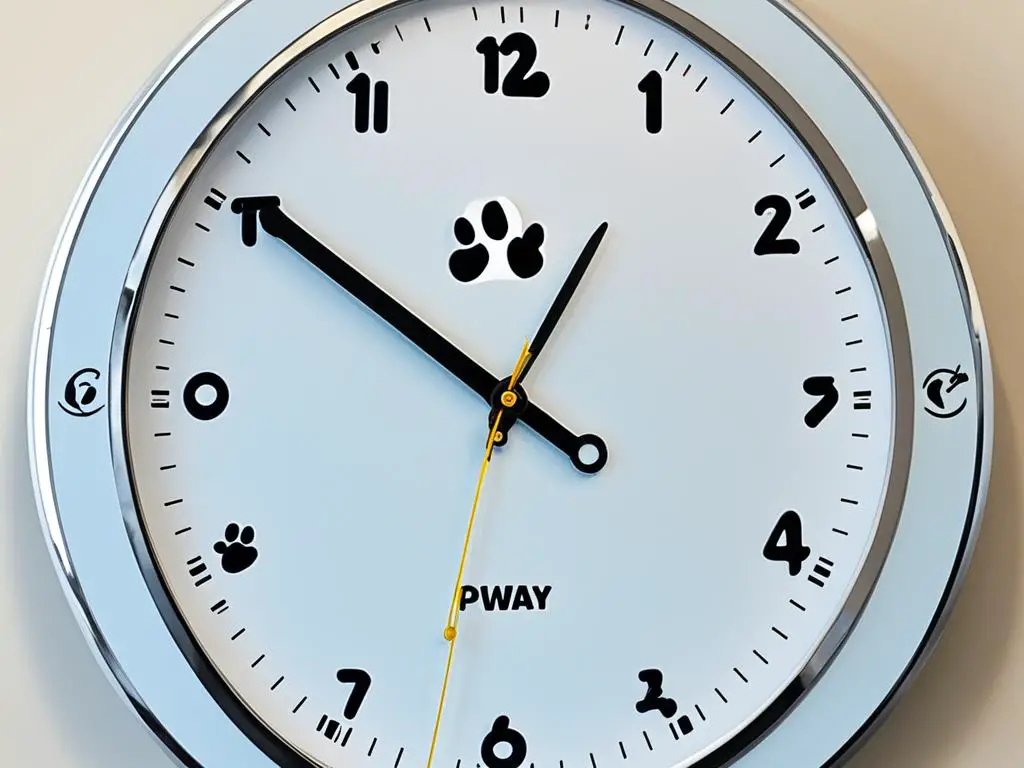
Cleaning Up After Accidents
Accidents can happen during the potty training process, and it is important to clean up after them properly. When dealing with pet urine accidents on carpet, follow these steps to ensure effective cleaning:
- Lift the spill: Immediately after discovering the accident, gently press a paper towel or absorbent cloth onto the affected area to lift the spill away from the carpet fibers. This helps prevent the urine from seeping deeper into the carpet.
- Blot, don’t scrub: Instead of scrubbing the stain, use a blotting motion to absorb the urine and avoid spreading the stain. Scrubbing can push the urine deeper into the carpet and make it more difficult to remove.
- Use a mild detergent solution: Create a solution of mild detergent and warm water. Dampen a clean cloth with the solution and gently blot the stained area. Test the solution on a small, inconspicuous area of the carpet first to ensure it doesn’t cause any discoloration.
- Professional carpet cleaning: If the odor persists or if the carpet is heavily soiled, it is best to seek professional carpet cleaning services. Professionals have the necessary expertise and equipment to effectively eliminate pet odor and deep clean the carpet.
Properly cleaning up after pet urine accidents is crucial to prevent lingering odors and maintain a clean and fresh environment in your apartment. Taking immediate action and using the right cleaning techniques can help minimize the impact of accidents on your carpet.
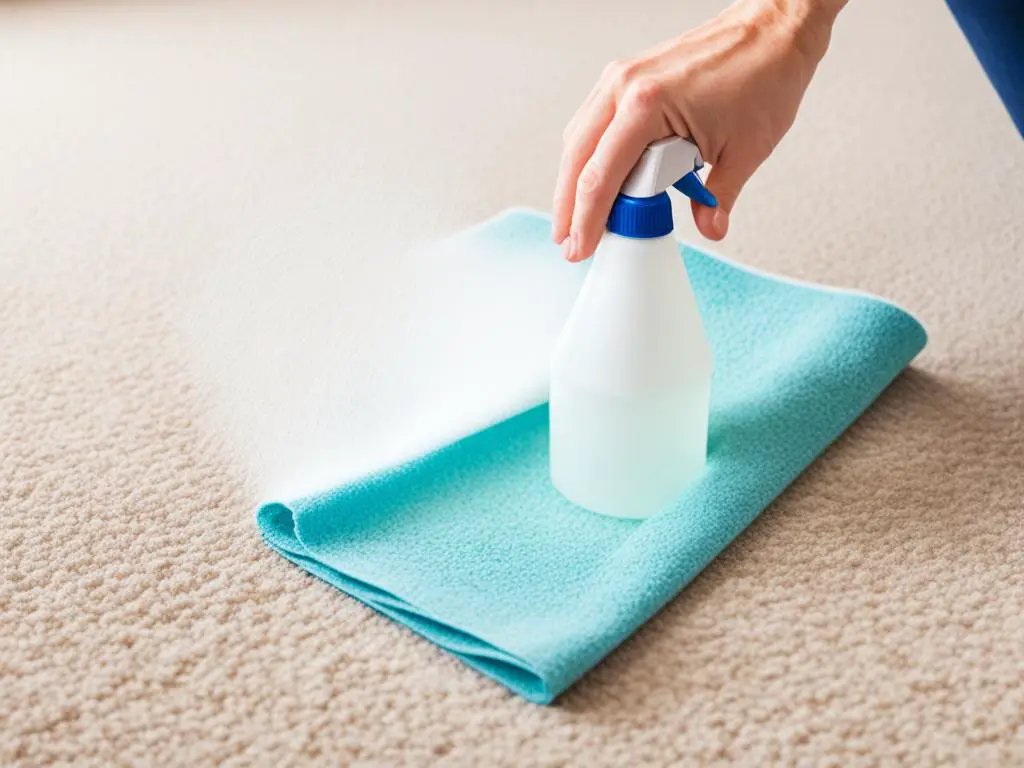
Indoor Potty Training Solutions
Living in an apartment with carpet may require some indoor potty training solutions for convenience. Here are a few options to consider:
1. Potty Pads
Potty pads are a popular choice for apartment dwellers. These pads, often made of absorbent material, provide a designated area for the puppy to eliminate. By consistently using the pads during potty training, the puppy can learn to associate them with the appropriate place to go. It is recommended to gradually move the pads closer to the desired outdoor potty area to encourage the transition from indoor to outdoor elimination.
2. Indoor Grass Area
Another solution is to create an indoor grass area. This can be achieved by using specially designed trays or patches with either artificial or real grass. The grass area simulates an outdoor potty spot, allowing the puppy to feel more comfortable with the concept of going outside. It is important to regularly clean and maintain the grass area to prevent any unpleasant odors.
3. Teaching the Puppy to Ring a Bell
Some pet owners opt to teach their puppies to ring a bell when they need to go potty. This can be done by hanging a bell by the door and training the puppy to touch or ring it whenever they need to eliminate. With consistent and patient training, the puppy will associate the bell with the need to go outside and relieve themselves.
Using these indoor potty training solutions can help make the training process easier in an apartment with carpet. It’s important to remain consistent and patient throughout the training journey, praising and rewarding the puppy for desired behavior. By providing a designated potty area and teaching the puppy where to eliminate, accidents on the carpet can be minimized, making apartment living with a puppy more enjoyable.
| Indoor Potty Training Solutions | Pros | Cons |
|---|---|---|
| Potty Pads | – Provides a designated area for elimination – Easy to clean and replace – Convenient for apartment living |
– Transition to outdoor elimination may take time – Requires consistent use and training – Additional ongoing cost for purchasing pads |
| Indoor Grass Area | – Simulates an outdoor potty spot – Provides a natural feel for the puppy – Can be used with real or artificial grass |
– Requires regular cleaning and maintenance – May take up space in the apartment – Initial setup cost for trays or patches |
| Teaching the Puppy to Ring a Bell | – Provides a clear communication method – Can be a fun and interactive training activity – Helps puppy develop a specific signal to go potty |
– Requires consistent training and reinforcement – May take time for the puppy to learn and understand – Bell may become a toy for the puppy |
Tips for Successful Apartment Potty Training
To successfully potty train a puppy in an apartment with carpet, it is important to establish good potty habits and maintain a consistent routine. Follow these tips to set your puppy up for potty training success:
1. Establish a Regular Feeding and Potty Schedule
Creating a consistent schedule for feeding and potty breaks is crucial. Feed your puppy at the same times every day, and take them to their designated potty area shortly after meals. This routine helps them develop a predictable bathroom schedule.
2. Closely Supervise Your Puppy
When your puppy is not in their crate or pen, keep a close eye on them to prevent accidents. Watch for any signs that they need to go potty, such as sniffing or circling. By intervening early, you can redirect them to the appropriate area.
3. Provide a Designated Potty Area
Set up a specific spot for your puppy to eliminate, whether it’s a bathroom, balcony, or indoor potty pad. Consistently bringing them to this area reinforces the desired behavior and helps them understand where they should go.
4. Minimize Distractions during Potty Breaks
When it’s time for a potty break, keep distractions to a minimum. Avoid engaging in play or allowing your puppy to explore too much, as this can divert their attention from the task at hand. Focus on getting them to go potty first.
5. Control Food and Water Access
Managing your puppy’s access to food and water can help regulate their need to eliminate. Provide meals on a consistent schedule and control water intake, especially in the evening. This can prevent accidents during the night or when you’re unable to supervise them closely.
6. Use Positive Reinforcement
Praise and rewards are powerful tools in potty training. When your puppy successfully goes potty in the designated area, offer verbal praise, treats, or a favorite toy. This positive reinforcement helps reinforce the desired behavior and encourages them to repeat it.
By following these tips and providing a consistent and positive potty training environment, you can set the scene for successful apartment potty training. Remember to be patient with your puppy and celebrate their progress as they learn this essential skill.
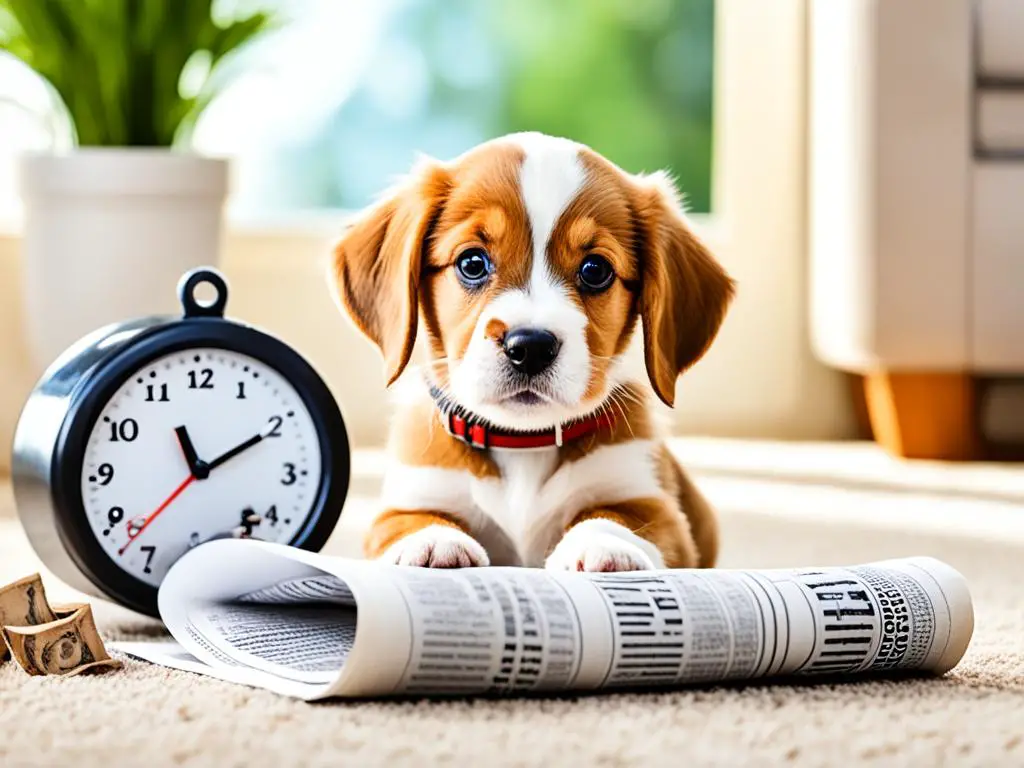
Conclusion
Potty training a puppy in an apartment with carpet may seem like a daunting task, but with the right approach, it can be accomplished successfully. By establishing a consistent routine for feeding and potty breaks, pet owners can help their puppies understand when and where to eliminate. It is important to promptly clean up accidents to prevent lingering odors and maintain a clean living environment. Using indoor potty training solutions such as potty pads or creating an indoor grass area can also be helpful. Positive reinforcement and consistency are key throughout the training process to reinforce good behavior and achieve the desired results.
With patience, dedication, and the right techniques, potty training a puppy in an apartment with carpet can be a smooth process. Remember to set realistic expectations and be consistent in your training methods. Each puppy is unique and may require different approaches, so be prepared to adapt your training techniques accordingly. By following these tips and staying committed to the training process, you can help your puppy develop good potty habits and live harmoniously in your carpeted apartment.
In conclusion, potty training a puppy in an apartment with carpet is achievable. With time, effort, and a positive attitude, you can create a clean and sanitary environment for both you and your furry friend. Be patient, stay consistent, and celebrate each milestone along the way. Before you know it, your puppy will be fully potty trained and ready to enjoy a happy and comfortable life in your apartment.
